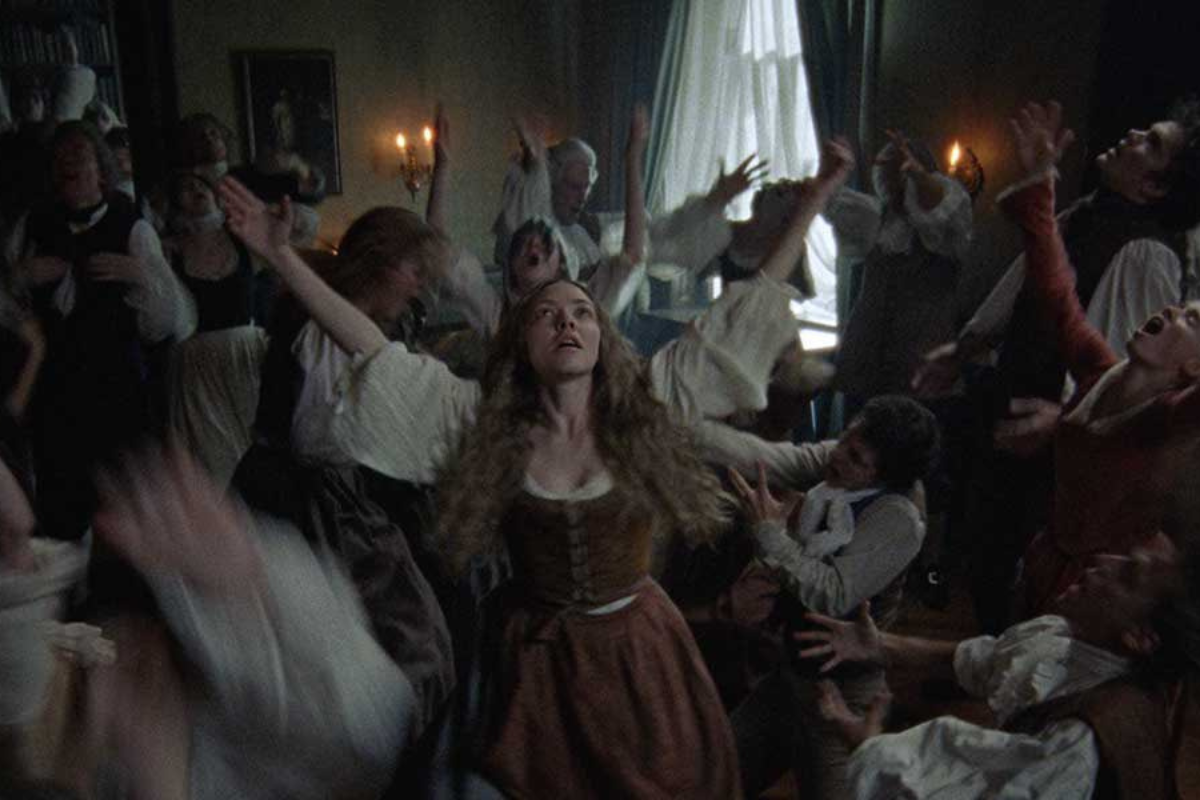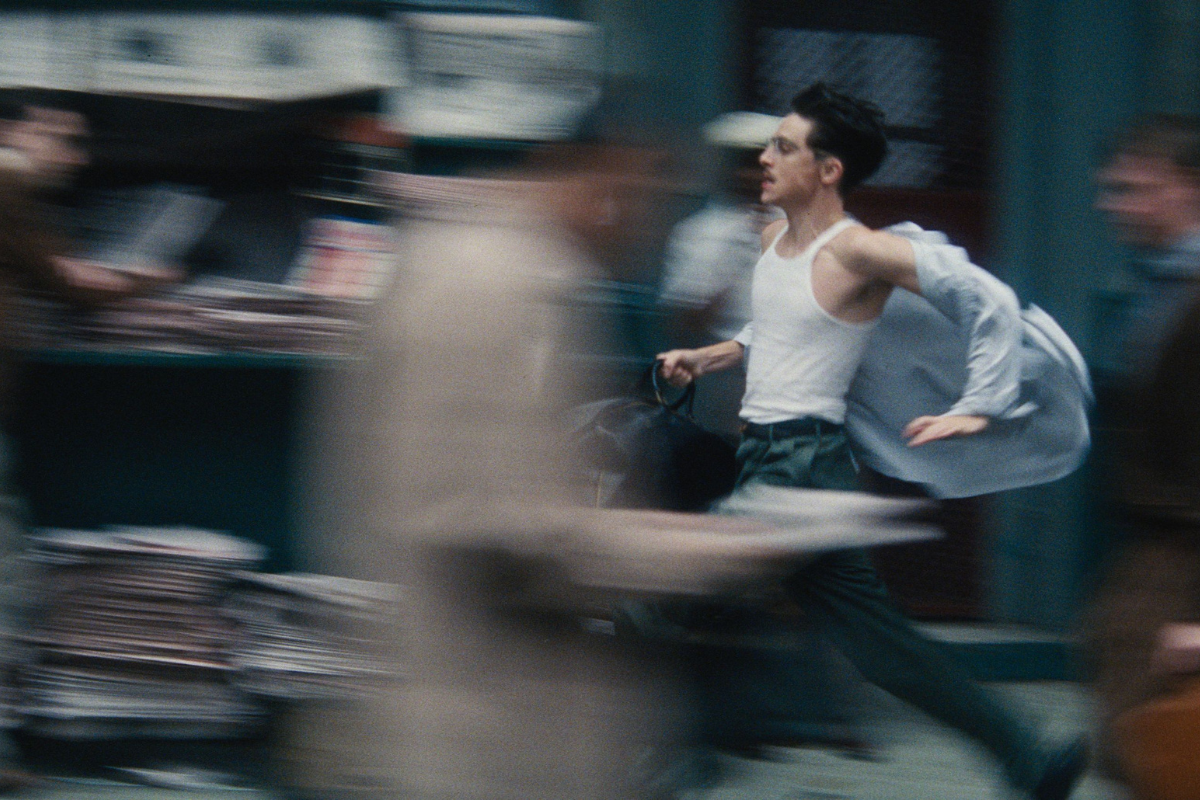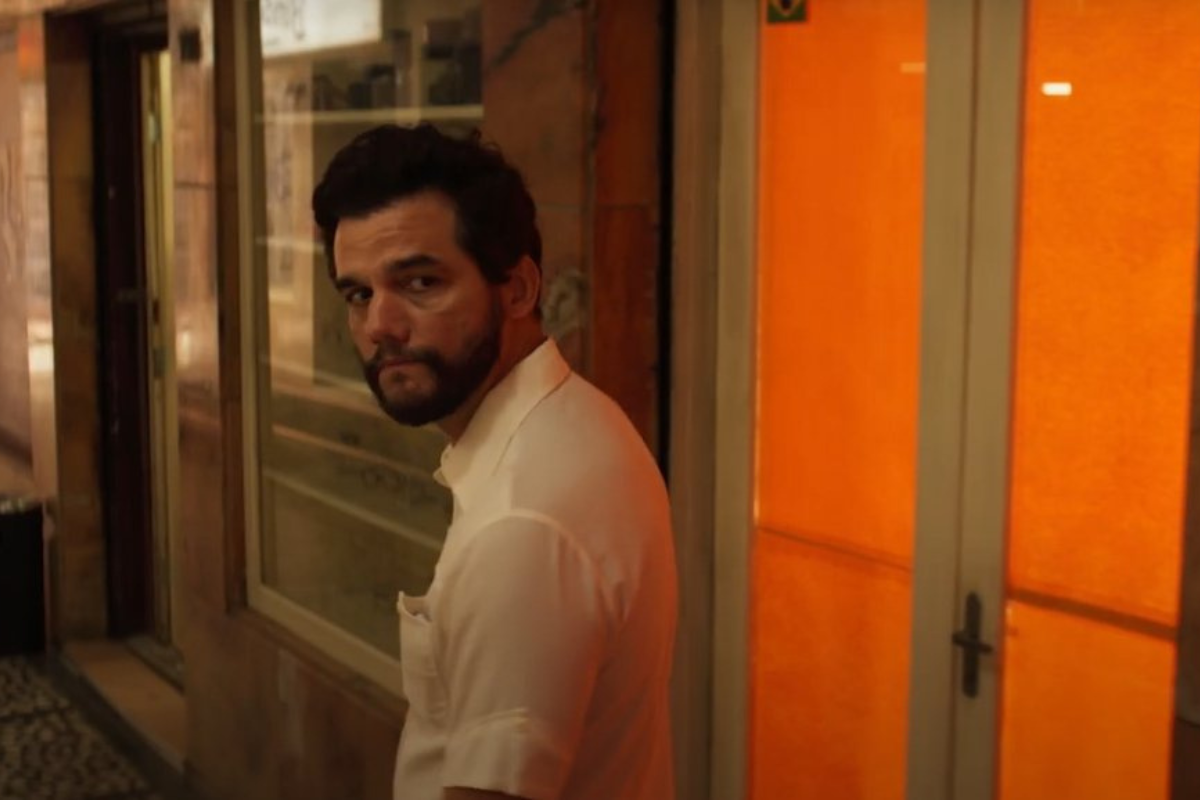Understanding Screenwriting: Crash! Run! Invasion! Riot!
In his continuing column, Understanding Screenwriting, Tom Stempel analyzes Fast & Furious Presents: Hobbs and Shaw; Brittany Runs a Marathon; Official Secrets, and The Big House.
In his continuing column, Understanding Screenwriting, Tom Stempel analyzes Fast & Furious Presents: Hobbs and Shaw; Brittany Runs a Marathon; Official Secrets, and The Big House.
A Thematic and Structural Analysis of a Commercial American Film.
Fast & Furious Presents: Hobbs and Shaw (2019. Screenplay by Chris Morgan and Drew Pearce, story by Chris Morgan, based on characters created by Gary Scott Thompson. 137 minutes)
Vroom.
Skid.
Crash.
Brixton (Idris Elba) walks beautifully alongside a crashed truck; why do I hear the James Bond theme in my head?
Intro Smirk (Dwayne Johnson).
Intro Sulk (Jason Statham).
Helen Mirren collects a couple of pounds for half a day’s work.
Uncredited Guest Star appears.
Macguffin explained.
Smirk and Sulk bicker.
Vroom. Vroom. Vroom.
Sister has the Macguffin.
Bicker, bicker.
Team goes to Russia.
Vroomski, Vroomski, Vroomski.
Bicker, bicker, bicker.
Second Uncredited Guest Star appears.
Team goes to Samoa.
Bicker, bicker, bicker.
Sister tries to get rid of Macguffin. Suspense.
Smirk’s Samoan relatives help defeat the bad guys.
End credits
Scene setting up sequel.
More End Credits.
Another scene setting up sequel.
Credits end.
Yet another scene setting up sequel.
Not Just Another Funny Fat Girl.
Brittany Runs a Marathon (2019. Written by Paul Downs Colaizzo. 103 minutes)
I saw this and the film in the next item on August 30, and what struck me about both showings were the trailers before the screenings. The Los Angeles Times had an article that morning on the upcoming film festivals and how they pre-figure the awards seasons. The Times followed that with a Sunday Calendar section that was a preview of upcoming fall releases. Some people tell that fall is here by the back to school sales, but in Los Angeles we know it’s when the awards season starts. The trailers with both films were for the “serious” films of the fall, such as Downton Abbey and Lucy in the Sky. You know it’s fall when movie trailers list which of the cast members were award winners or nominees.
Although you cannot tell it from the credits, Brittany is based on the true story of Brittany Forgler. So when we get some stills of the real Brittany running in a marathon at the end of the film, we may have no idea who she is. The movie Brittany (well-played by Jillian Bell) is a smart-mouthed woman who is carrying more weight than she should, as a doctor tells her in one of the opening scenes. Brittany is hunting for a new doctor to give her a prescription for Adderall, but he points out the health problems she is facing carrying the extra weight.
Brittany is in the tradition of the jolly fat girl in movies, but she is a lot edgier than most of those. She does not respond well to the doctor’s suggestions, or anybody else’s suggestions for that matter. She not only gets on other people’s nerves, but on the audience’s as well. Obviously, we are supposed to root for her, and we do, but sometimes reluctantly.
So Brittany starts running, since she does not have enough money to go to the gym. She meets some other runners and makes some sort of friends. Colaizzo has written some nice characters, but the problem then becomes that when Brittany is snotty toward them, we like Brittany less.
About two thirds of the way through the movie, when Brittany is deep into preparation for the New York Marathon, she fractures her ankle. I assume this happened to the real Brittany, but it stops the movie dead in its tracks. We, Brittany, and her running friends are committed to her running in this marathon, and we have to wait for the next one, which means to movie has to start all over again, giving us scenes we have seen before. And Brittany does not become a better person while she’s waiting.
Finally we get to the marathon Brittany does run. Her running friends are not running in this one, but at least they are on the sidelines cheering. We are too, which gives the film an earned uplift in the final moments.
Colaizzo also directs the film and the skill of him and his crew at shooting material with Bell and her double in an actual marathon is astonishing. That also helps increase the audience satisfaction with the film.
Hey, You Knew I was Going to Like This One.
Official Secrets (2019. Screenplay by Sara Bernstein & Gregory Bernstein and Gavin Hood, based on the book The Spy Who Tried to Stop a War: Katharine Gun and the Secret Plot to Sanction the Iraq Invasion by Marcia Mitchell and Thomas Mitchell. 112 minutes)
As you can tell from the title of the book this one is based on, this, like Brittany, is based on a true story. The writers here do a much better job at making the story compelling and entertaining.
Katharine Gun was a woman working as a translator at the Government Communication Headquarters (GCHQ) for the British intelligence services. In 2003 she comes across an email in which the Americans are asking the Brits to spy on the UN representatives of several smaller countries. O.K., we all spy on each other. But the email asks them specifically to see what they can find to blackmail those representatives to support the proposal of the U.S. invade Iraq.
This rubs Katharine the wrong way. Well, it would rub most of us the wrong way. But Katharine is even more moral than we are. So she gets a copy of the letter to an anti-war activist, indicating she should get it to a journalist. Which the activist does. After a lot of discussion at the journalist’s newspaper, The Observer prints the story. Yes, there are elements of All the President’s Men (1976) and The Post (2017) here, but Official Secrets is as good as the former and better than the latter.
For the first part of the movie, we are focused on Katharine. Then she does not appear as much as we focus on the journalists. Here is where the model the writers might have used is the 1963 Kurosawa film High and Low. In it a rich businessman, played by Toshiro Mifune, thinks his son has been kidnapped for ransom, only to discover that the kidnappers got the wrong kid: his chauffeur’s son. In the second half of the film we see the police manhunt, but very little of the businessman. But the film has the advantage of having Mifune as the businessman, since his presence hangs over the rest of the film.
The Toshiro Mifune in this film is Keira Knightly as Katharine. We are thinking of her, and sympathetic with her character all the way through. It is one of Knightly’s best performances. Not that the other performances are not good as well, since they have cast the entire film well.
Needless to say, the British government is not happy with Katharine’s action and charges her with a violation of the Official Secrets Act. The problem for the government was that the lead-up to the invasion was a shit-storm of incompetence on three different continents. Katherine’s defense team, led by Ben Emerson (Ralph Finnes), keep finding ways to defend her. One of them is finding information that the Attorney General of England, at the time Katharine was exposing the email, had put in a legal opinion that the invasion was illegal.
So we know, in dramatic terms, what is going to happen: a big courtroom scene pitting Finnes against whomever of Her Majesty’s First Team shows up for the prosecution. Katherine is brought into court through a long set of hallways that make us feel the walls are tightening in on her (Hood directed as well co-wrote and he’s brilliant in both capacities). But I knew something was up when she finally gets into court and neither the prosecutor nor the crusty judge are played by members of Her Majesty’s First Team.
The state has decided not to prosecute Katharine for the stated reason they feel they cannot get a conviction. The real reason of course was that the defense’s request for documents would reveal a lot of the stupid and evil stuff the government was up to.
Now you would think not having a big courtroom scene would be a disappointment for the audience. It is not because we have had a lot of suspense in the rest of the film and we have been involved with the characters and because it is Knightly as Katharine, we are happy to see her off the hook.
Finally.
The Big House (1930. Story and dialogue by Frances Marion, additional dialogue by Joe Farnam and Martin Flavin. 87 minutes)
I have been meaning to get around to this film for several decades, and I finally made it. Thank you Turner Classic Movies.
The Big House is the first talkie about prison life. You will notice that nearly all the clichés of prison pictures, up to and including Orange is the New Black, start here. What struck me is that how fresh they still seem looking at this picture 89 years after it was made. You try to write a picture that holds up almost a century after it was made.
One reason I wanted to look at this is that it was written by Frances Marion. She started screenwriting in the silent days, writing many of the Mary Pickford films. She wrote Anna Christie (1930), Garbo’s first talkie; The Champ (1931), her second writing Oscar after winning for The Big House; Dinner at Eight (1933), and Camille (1937).
I first came across Marion in 1972 when I read her memoir Off With Their Heads! It was rather disappointing since it was more about the social life in Hollywood than her writing. In the fall of that year she was one of the guests at a series of screenings and discussions at the Los Angeles County Museum of Art. I figured I would give her another chance and went to hear her, and I was just as disappointed as I had been in her book.
So when I came around to writing FrameWork: A History of Screenwriting in the American Film (1988), I only had three references to her.
Fortunately, Cari Beauchamp had a different reaction to Off WithTheir Heads! She found Frances an interesting character and ended up writing one of the great screenwriting biographies, Without Lying Down: Frances Marion and the Powerful Women of Early Hollywood (1997). I first became aware that Carrie was writing the book when she submitted a brief biographical article to Creative Screenwriting, back in the mid-90s when it was a print journal. I was on the editorial board, and we printed the piece, but I wrote a letter to the editor that was also printed pointing out that Cari had not mentioned a comment by John Bright. He was a screenwriter in the early thirties, and he was interviewed in a collection of screenwriter interviews entitled Screenwriter: Words Become Pictures (1987; not to be confused with my 1980 book Screenwriter: The Life and Times of Nunnally Johnson. Ahem.) Bright told his interviewer, Lee Server, that Robert Tasker, an ex con, “ghost-wrote the Frances Marion screenplay for The Big House. Word for word…She took the sole credit. It was a very bitter day for him.”
Several months later Cari submitted a piece on the writing of The Big House and there was no mention of Tasker or his comment. I called her up and said that I was perfectly willing to believe he had nothing to do with the script, but she would really have to find a way to deal with it in her book. I offered to read the manuscript for her, but she said that Kevin Brownlow was reading it. Since Kevin is God, especially on anything about silent film, I passed.
A couple of years go by and her book came out, which I devoured. She had handled the Tasker issue brilliantly. She had not mentioned him at all, but went into such detail on Marion working with the director of The Big House on the script that it was clear the script was Marion’s, not Tasker’s.
Cari’s book was, and is, a brilliant look at Hollywood in the twenties and thirties. Cari made an interesting discovery. She found the original manuscript of Off With Their Heads! and guess what? There was a lot more about her work as a screenwriter. Her editor, presumably in New York, had leaned on her to focus on the social life. Longtime readers of this column can dredge up any of my anti-East Coast Intellectual Establishment jokes here.
So, finally, I got around to seeing The Big House. It begins with a gawky young man, Kent Marlowe, being taken into prison and we get the procedures of how that happens, so we feel we are in prison with him. We also think that he will become the hero of the film. After all, he’s not a hardened criminal, just a guy who got drunk and ran over somebody. But Marion is fooling us. He turns out to be the biggest coward of the lot.
Kent is put into a cell with Machine Gun “Butch” Schmidt, a real tough guy, but with a sentimental streak a yard wide. He is played by Wallace Berry, and the role revived his career. Marion had seen him eating spaghetti in the studio commissary and thought he would be convincing as a con, which he was.
The third cellmate is John Morgan, a slick conman played as a handsome lead by Chester Morris before he graduated to tough guy character roles. Morgan at one point gets out on parole and takes up with Kent’s sister. In the script she was Kent’s wife, but the first preview of the film made the head of the studio, Irving Thalberg, aware that was a weakness in the film. The audience turned off at that point since they thought that made Morgan too unsympathetic. Thalberg ordered rewrites and reshoots and the girl became a sister rather than a wife.
The film ends up a big attempt at a prison break that is, shall we say, not a success. It does not end well for several of the characters, although Morgan behaves heroically and gets a pardon so he can be with the girl.
See it if you get the chance.
Want to learn more about screenwriting from the comfort of your home? Check out the upcoming courses at Screenwriters University!
BROWSE NOW!
Tom Stempel is a Professor Emeritus at Los Angeles City College, where he taught film history and screenwriting from 1971 to 2011. He has written six books on film, five of them about screen and television writing. You can learn more about his books here. His 2008 book Understanding Screenwriting: Learning from Good, Not-Quite-So- Good, and Bad Screenplays evolved into this column. The column first appeared in 2008 at the blog The House Next Door, then at Slant, and then Creative Screenwriting before it found its forever home at Script.
In the column he reviews movies and television from the standpoint of screenwriting. He looks at new movies, old movies, and television movies and shows, as well as writing occasional other items, such as appreciations of screenwriters who have passed away, plays based on films, books on screenwriting and screenwriters, and other sundries.
In September 2023 Tom Stempel was awarded the inaugural Lifetime Achievement in the Service of Screenwriting Research by the international organization the Screenwriting Research Network.







